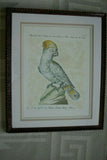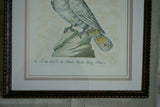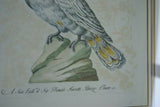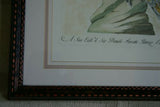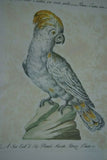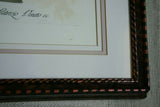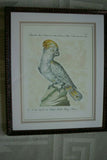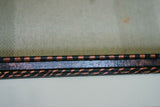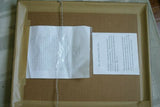Rare Archival Art by Saverio Manetti (16 C.) Very Limited Edition Folio Lithograph of Cockatoo Parrot professionally framed in hand painted signed frame with x3 acid free mats 22,5" X 17,5" from "The Natural History of Birds" COLLECTOR ART
Saverio Manetti High quality art print
Art by Saverio Manetti, Lorenzo Lorenzi and Violante
Natural History, Ornithology
Printed on the highest archival quality heavy woven stock available
This bird was originally from a 18th century rare book and has been reproduced in a very limited edition because of its beauty and the scientific insight of the times it represents.
Very rare and large folio.
Professionally framed and matted in unique frame
Measures: 22,5" X 17,5"
We recently closed our gallery of rare antique books and prints, original signed art and unique hand painted frames, some of the prints and art framed, some not, and all our artwork and antique prints will be listed here daily as we go.
This is a fine art limited edition folio print with some hand coloring done to age background. Framed and triple matted in one of a kind hand painted frame created by artist.
Item: DFPN93
"Yellow-Crested Cockatoo"
from Natural History of Birds (1767-1776)
by Saverio Manetti (with Lorenzo Lorenzi and Violante Vanni)
Fine Art Reproduction
Archival Ink, Fine Art Paper
Natural History, Ornithology
It was triple matted and professionally framed in a unique hand-painted frame, signed by the artist. Artist bio comes with it
Print is a very large folio lithograph
Finished size is: 22,5" X 17,5"
Retail was $490.00
Please inspect everything carefully to be satisfied.
Limited Edition Folio with some hand coloring: Etching originally dedicated to Monsignor Francesco Chigi, president of the Reverend Chamber in 1767. It was engraved in copper, under the figure. Magnificent hacking from "The Natural History of Birds" by Saverio Manetti, Lorenzo Lorenzi and Violante Vanni, printed in Florence in the years 1767-1776. Manetti, doctor and director of the botanical garden of Florence from 1749 to 1782, was responsible for the text, the nomenclature of the species and the distribution of the work. Abbot Lorenzo Lorenzi and Violent Vanni (one of the few women to work in that field) drew the boards, incised copper and painted them by hand. The result was the best and most extensive illustrated work of ornithology realized so far. This is the table number CXI of the work.
Francesco Saverio Manetti also spelt Xaviero or Xaverio Manetti (Latinized as Franciscus Xaverius Manetti civis Florentinus) (12 November 1723–12 November 1785) was an Italian physician, botanist and ornithologist. Among his works is the treatise on birds, Ornithologia methodice digesta or Storia naturale degli uccelli (1776). The plant genus Manettia was named in his honour by Carolus Linnaeus.
Manetti was born in Brozzi to Giovanni Bernardo and Maria Teresa Nesiscolt of Prague. His early studies were in Florence and later at Pisa where he studied botany under Pier Antonio Micheli. He graduated in medicine in 1745 and worked in Florence. In 1758 he joined the National Medical College where he studied anatomy under Antonio Cocchi (1695–1758), conducting the autopsy of Cocchi.[1] Manetti was Professor of Botany of the "Società Botanica Fiorentina", a member of the German Academy of Sciences Leopoldina, a Fellow of the Royal Society, learned societies in Göttingen and Montpellier, an Accademico dell'Istituto di Bologna and he maintained scientific contacts with the Swedish botanist Carl Linnaeus and with the main scientific circles of the second half of the 18th century.
He was supervisor of the Orto Botanico di Firenze in Florence from 1749 to 1782 succeeding toGiovanni Targioni Tozzetti and Secretary of the Accademia dei Georgofili. With remarkable organizational effort, he secured the publication of Storia naturale degli uccelli, Natural History of the birds, a monumental work in five volumes illustrated with 600 hand-colored engravings based onwatercolor paintings. The book was commissioned by Maria Luisa, Grand duchess of Tuscany and the first volume was dedicated to Grand Duke Pietro Leopoldo. The third volume was dedicated to Ferdinando di Brobone and the fourth to Giorgio Nassau Clavering. The engravings were made by Tuscan abbot and engraver Lorenzo Lorenzi and Violante Vanni who had studied under British engraver Robert Strange. Engraving was an unusual profession for women in Florence during the period.
Our frames are always unique and created especially for the art within.
They all come with Artist Bio.












